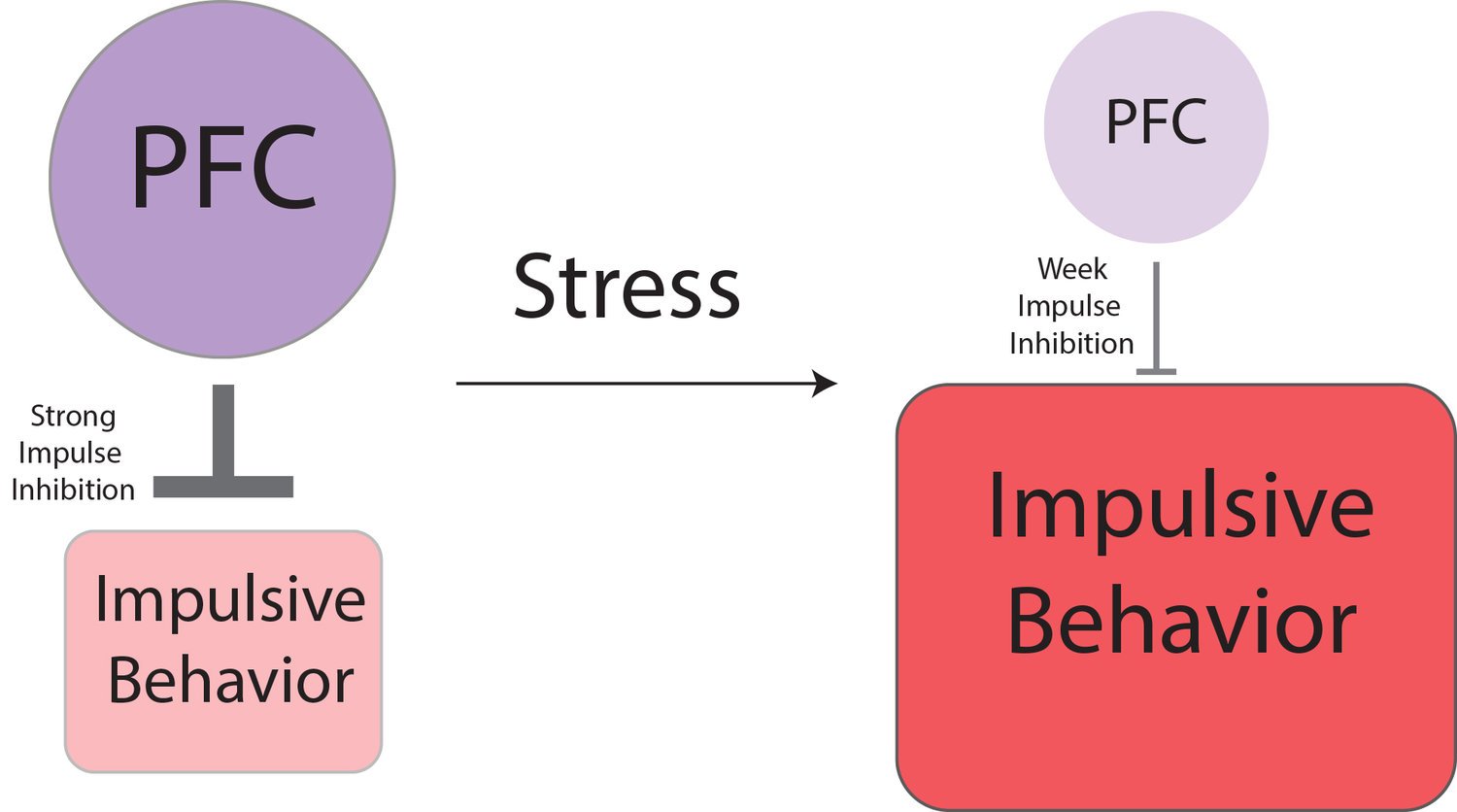The Science of Gear Acquisition Syndrome
People will do just about anything to alleviate their anxiety. During the last year of writing my doctoral thesis, the worry about being able to finish grew increasingly heavy. The relentless grind of research, constantly being told that your work is inadequate, and believing that 80-hour workweeks are average has its tolls on all students. Once you reach the edge of this process and are pulverized into oblivion, you get a nice, shiny PhD.
You may be wondering what got me through this. The answer? Buying a ton of camera equipment. To photographers, this type of retail therapy is known as gear acquisition syndrome. Someone with this syndrome impulsively buys cameras and related gear, amassing more camera gear than they can realistically use.
In this article, I will show how gear acquisition syndrome can alter our brain’s reward and stress systems. I will describe the brain regions that underlie reward processing (e.g., those erotic happy feelings related to buying, oh, say a Fujifilm X-Pro 1 with a 18mm equivalent Zeiss Touit lens, shoe mount flash, and leather case), impulse control, and how stress causes an imbalance between the brain regions associated with reward and stress. I’ll also discuss how uncertainties inherent in the creative processes increase stress and how compulsively buying camera gear can serve as a coping mechanism to alleviate this anxiety.
How Dopamine Modulates Reward Seeking and Impulsivity
When something rewarding or negative happens, we change our behaviors to increase the likelihood of reward and decrease the likelihood of harm. This type of learning is called behavioral reinforcement and it is pivotal to helping humans survive in the world.
Much of the neuroscience research on reward-based behavioral reinforcement focuses on three brain regions: the ventral tegmental area (VTA), the nucleus accumbens (NAc), and the prefrontal cortex (PFC). The VTA makes and releases the neurotransmitter dopamine. Dopamine is naturally released by the VTA when something rewarding happens, such as scratching a winning lottery ticket, winning first place in a photo contest, eating an amazing cookie, having an orgasm…you get the picture.
The NAc is often referred to as the reward-processing center. When the VTA is activated by a reward, dopamine is released in the NAc leading to a rewarding feeling. Depending on the value of the reward (e.g., that first click of a new camera might be more rewarding than an orgasm for some, and vice versa for others), the feeling can range from joy to pure ecstasy.
Dopamine producing neurons project their axons to areas of the brain that include the prefrontal cortex (PFC) and the nucleus accumbens (NAc)
Last, the PFC functions, in part, to control impulsive reward seeking. When a reward occurs the PFC also receives dopamine, which increases our attention towards the events that led to the reward, allowing us later to find the stuff we know will give us happy feelings.
Although the PFC is important in locating rewards, it is also necessary for inhibiting us from impulsively seeking those rewards. For example, when you have a hard deadline due at 5PM, it’s helpful to inhibit your desire to go to a bar at 9AM, make some risky bets at the dog track, and then pass out on the bus on your way home. The PFC inhibits impulsive reward seeking by directly modulating the NAc and VTA.
A cognitive and neuroscience model of stress and impulsivity
Stress affects our desire to seek out rewards. When something stressful happens, the body responds by releasing stress hormones. These hormones are released throughout the body and brain. Stress hormones decrease our ability to inhibit impulsive behaviors and increase our desire to find rewards. Because of stress, we are sometimes unable to control desire for rewards that alleviate stress. Below, I will talk about a potential source of stress that promotes gear acquisition syndrome.
What are some stressors that alter the reward-inhibition balance in the brain of a photographer? There are many, but one source of stress may be from the uncertainties that are part of the creative process. Starting a new photography project often means that we are entering uncharted territory, which may bring up insecurities because we are choosing to expose ourselves to failure.
Olivier Duong captured this well when he wrote recently that:
I then realized what was happening, I was insecure in my photography so I was finding it in cameras. When you get a new camera you feel like you can take on Eugene Smith or something. But after the high, I needed my next fix to hide my insecurities. That’s why I could never have enough cameras.
The fear to create can be debilitating and prevent one from even starting a new project or taking photographs. There are two psychological concepts that could explain this type of behavior. The first concept is called catastrophic thinking and the other is anxiety-induced avoidance behavior.
Catastrophic thinking is a type of cognitive distortion in which someone overemphasizes the worst possible outcomes when starting (or thinking about starting) something new. Catastrophic thinking can contribute to stress and impede our willingness to try something new (i.e., behavioral avoidance – discussed below). This type of thinking is demonstrated well by photographers David Bayles and Ted Orland in their book Art & Fear:
Fears about artmaking fall into two families: fears about yourself, and fears about your reception by others…Artists quit when they convince themselves that their next effort is already doomed to fail.
The Scream, 1893 by Edvard Munch
Avoidance behaviors are one way (albeit not always a health way) to try to prevent anxiety. Generally, avoidance behaviors occur when one is concerned about their inabilities and others’ judgment. Again, Bayles and Orland:
Consider that if artist equals self, then when (inevitably) you make flawed art, you are a flawed person, and when (worse yet) you make no art, you are no person at all! Annihilation is an existential fear: the common—but sharply overdrawn—fear that some part of you dies when you stop making art
This quote highlights how someone might avoid photography to avoid anxiety related to failure and judgment – and how avoidance can be a maladaptive coping mechanism because photography is generally pretty meaningful to photographers.
If the stress related to fear of failure is strong enough, it can alter the function of the reward system. Specifically, it decreases the ability to inhibit impulses and enhances reward-seeking behavior as a way to cope with stress.
Buying Gear to Ease the Pain
Imagine that you want to start a new project but feel overwhelmed about initiating it. Perhaps negative thoughts start to creep in, which creates more negative thoughts, which snowball into catastrophic thinking and avoidance. Why start when you will expose yourself to all those feelings of stress for what you’re sure will be failure? Instead, you might make yourself feel better by buying a new camera, which is an easily justifiable (given that you’re a photographer) and stress-reducing reward.
The joy of buying new gear is short lived. Let’s face it; getting used to a new toy happens pretty fast. This process is called habituation, which is the simplest type of learning. After new gear is purchased we habituate to it and then seek new rewards that are often bigger and better, which is similar to drug abuse.
A consequence of Gear Acquisition Syndrome
Drugs induce a high, but after continued use the high becomes smaller and smaller. In order to feel the high as it once was, it’s necessary to consume a greater amount of the drug. For the photographer the high of buying something new will eventually lead to habituation. This may in turn lead to purchases that are more frequent or greater in cost as a way to combat the habituation.
It does not help that camera manufactures churn out new cameras for every conceivable market possible and, with the help of photography blogs, sensationalize the new technology. There’s an endless supply of gear to buy and when acquiring gear is used to reduce anxiety, a vicious stress-reward cycle sets in leading to gear acquisition syndrome.
Confronting the Challenge
Overcoming gear acquisition syndrome will not be easy and it is something that will always have to be attended to as a photographer. The onslaught of new gear, choosing to create, exposing oneself to failure is difficult and buying new things won’t solve these problems. Studies show that spending money on objects can be very rewarding but only for an incredibly short period of time.
One way by which joy increases and is maintained is through finding new experiences, creating new memories and giving meaning to those memories. An example would be going on a vacation with a loved one and if you’re like me your loved one learns to bring several books (sorry wife).
It takes courage to create and the anxiety will always be there. Overcoming fear is part of this process and in the end finding personal success with life’s challenges is rewarding.
Hi, my name is Josh and I have gear acquisition syndrome.
Originally published on PetaPixel




